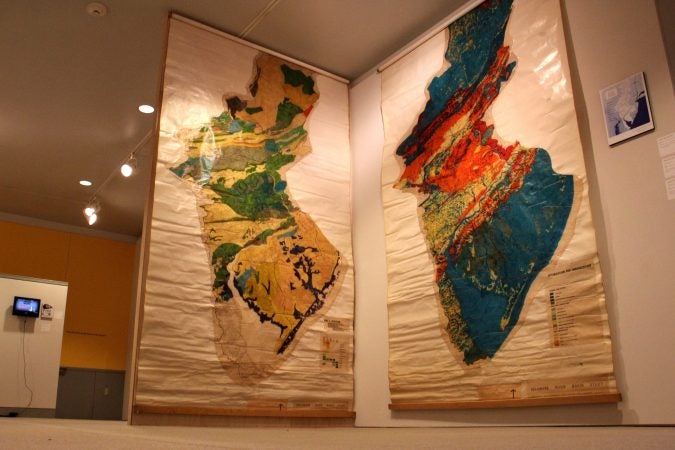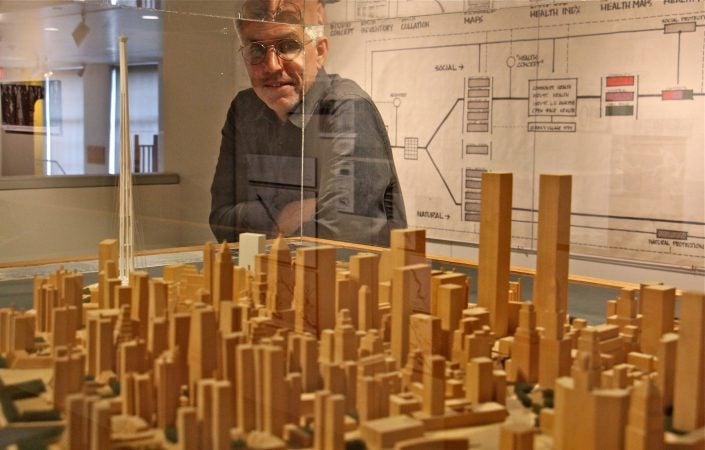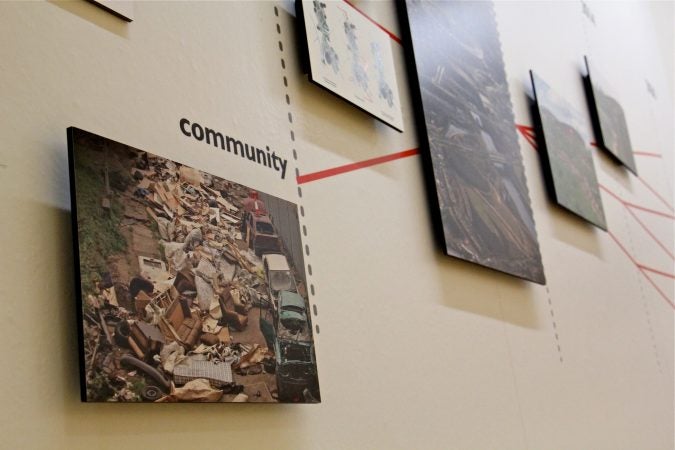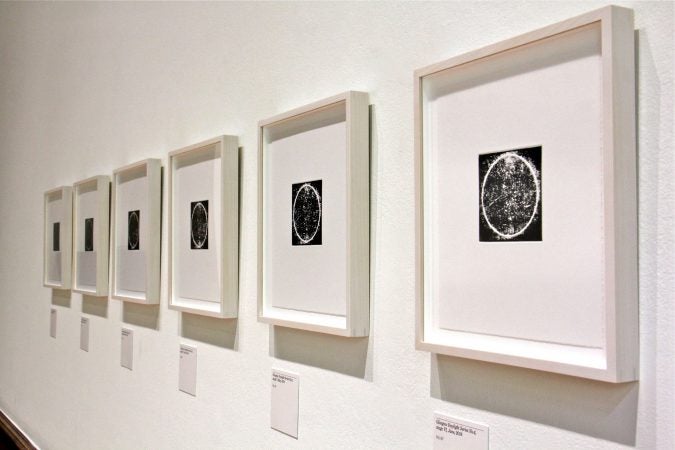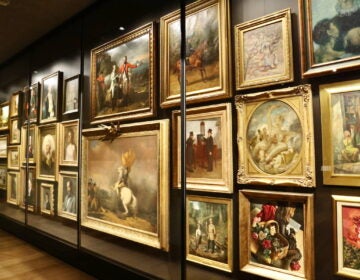Not over the hill: ‘Design With Nature,’ Ian McHarg’s landmark book of ecological design turns 50
The father of modern landscape design wrote the book that set the 1970s environmental movement on course.

A flood abatement project in the Netherlands also aims to create a more attractive river landscape. It is one of 25 projects featured in the University of Pennsylvania's exhibit in tribute to landscape architect Ian McHarg. (Emma Lee/WHYY)
This summer seems to be the 50th anniversary of just about everything: the moon landing, Woodstock, the Stonewall Riots, the deaths of both Judy Garland and Brian Jones, as well as the burning of the Cuyahoga River in Ohio.
A much quieter event in 1969 was the publication of Ian McHarg’s “Design With Nature,” a book that would have deep reverberations in architectural, environmental, and political worlds. It undergirded the eventual passage of landmark federal air and water protections in the 1970s.
McHarg, a Scotsman by birth, was a University of Pennsylvania professor of landscape architecture who publicly railed against city planning that did not take ecology into consideration. Case in point was the Cuyahoga River near Cleveland, so polluted it caught fire.
“There were things happening in the ’60s that were telling us this is wrong, that this is something that is fundamentally flawed about how we build our cities,” said Bill Whitaker, curator of the architectural archives at the University of Pennsylvania.
“But he [McHarg] realized that people paid attention when you had scientific information and you had hard facts,” Whitaker said. “Hard facts really helped him communicate on a larger scale.”
McHarg was a data-driven designer. He created a process to methodically collect information about a particular landscape — its underground aquifers, native foliage, soil types, human populations, etc. — and draw them as so many geological maps, maps that could be overlaid to show how all that information interacted.
Thus armed, ecology became the starting point for architectural planners.
“Nowadays, we do this with algorithms, with computers,” said Whitaker. “Back then, they did it with alcohol-based markers, acetate, they tried to do it with light tables. It was the beginning.”
McHarg and his students drew huge maps of the Philadelphia watershed, by hand, a half-century ago. Now, the maps are hung from the ceiling of the Penn archives’ Kroiz Gallery. Measuring 6 feet by 12 feet, they are so large that Whitaker had to roll a portion of the maps to fit them to the height of the gallery.

This was not design. Not yet. This was learning what the land could do and what it could not do. McHarg believed that’s where architecture should begin.
“Let us abandon the simplicity of separation and give unity its due,” McHarg wrote in “Design with Nature.” “Let us abandon the self-mutilation which has been our way and give expression to the potential harmony of man-nature.”
McHarg had a pugnacious personality that endeared him to the counterculture of the time. For two years, he had his own TV show, “The House We Live In,” on which he had wide-ranging conversations with designers, scientists, and theologians about the state of mankind.
On television, he would openly critique the biblical proposition that man should have dominion over the earth.
“Show me any civilization who believes reality exists only because man can perceive it, that the cosmos was erected to have man at its pinnacle, that man exclusively is divine, and then I will predict the nature of his cities,” McHarg said to the camera. “The hot dog stands, the neon shill, the ticky-tacky houses, the sterile core, the mined and ravaged countryside: This is the image of anthropocentric man.”
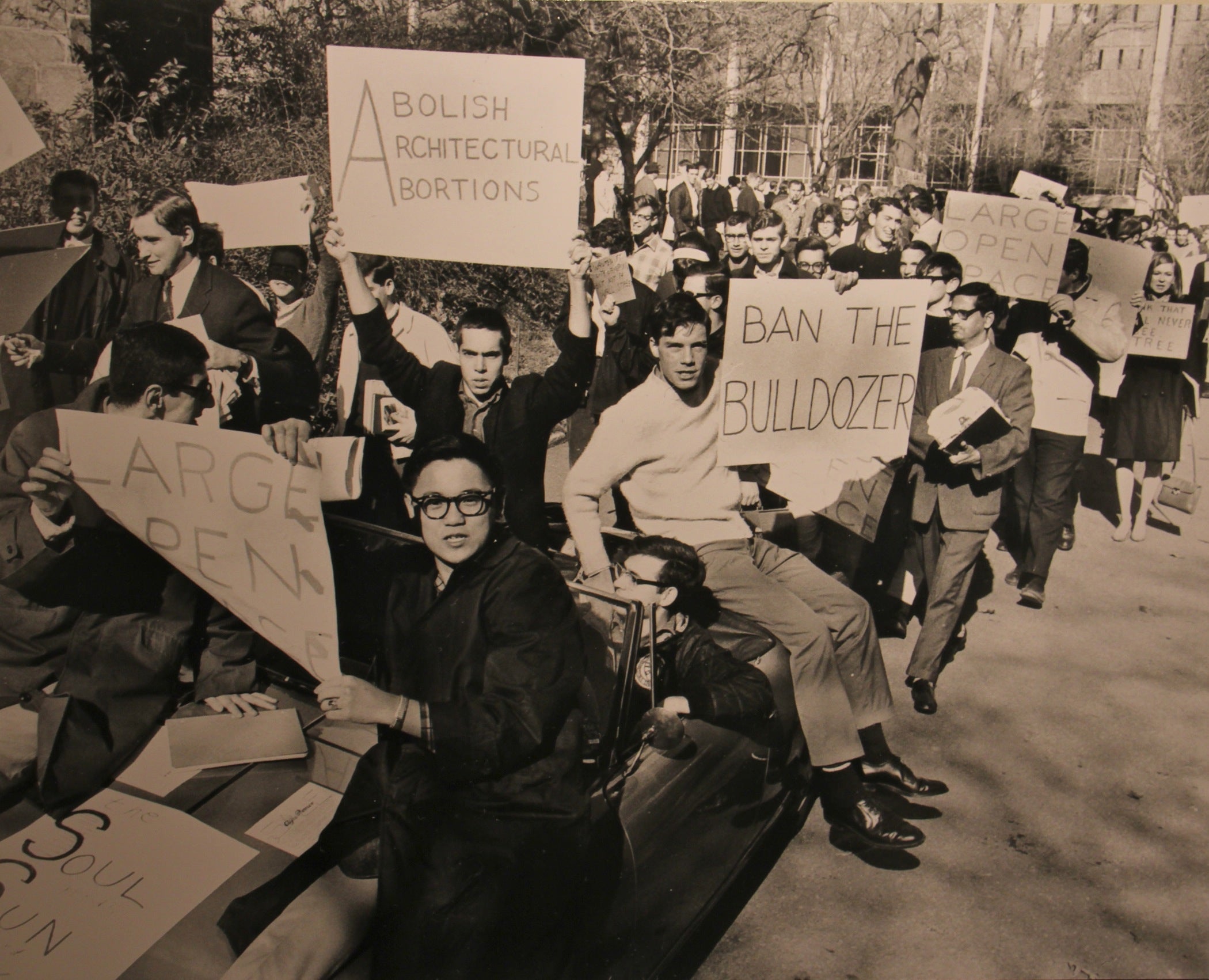
To mark the 50th anniversary of “Design with Nature,” UPenn has opened three exhibitions on campus: The Kroiz Gallery in the Fisher Fine Arts Library summarizes McHarg’s work; the Arthur Ross Gallery at the opposite side of the building features an artistic response to his data-gathering methods by Laurel McSherry; and the lobby of Meyerson Hall next door pays tribute to the legacy of McHarg with displays of 25 large-scale environmental design projects currently happening around the world.
It includes the Great Green Wall, a project designed to slow the spread of the Sahara Desert. Twenty African nations are collaborating on the creation of a 5,000-mile-long, 9-mile-deep agricultural belt that they hope will contain the creeping desert.
Also featured is Emscher Landscape Park, an ongoing effort by 20 municipalities in Germany to rehabilitate the Ruhr rust best, a former mining and steel manufacturing sector left to post-industrial ruin. The project hopes to incrementally revitalize it, through hundreds of small projects, into a more economically, environmentally, and recreationally attractive valley.
The exhibition also highlights the problem with Lower Manhattan. Rising seawater threatens to sink much of New York’s Battery Park, for which Superstorm Sandy in 2012 offered a preview. One project proposes to adapt the edge of the city into a kind of urban wetland that would be adaptable to flooding. Another project, the “Big U,” proposes a sea wall around Lower Manhattan.

McHarg himself considered the design of Lower Manhattan in the 1970s, when he was with the architectural firm Wallace McHarg Roberts & Todd. The Kroiz Gallery has a scale model of his vision for Battery Park, made four decades before the devastating floods of Sandy.
“My ideas were certainly not of any interest to society at all for the first 10 years,” McHarg wrote about his early days in America. “The only people who listened to me were the ladies in garden clubs.”
WHYY is your source for fact-based, in-depth journalism and information. As a nonprofit organization, we rely on financial support from readers like you. Please give today.




